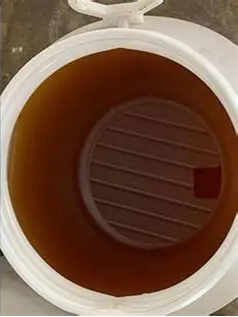1. Introduction
Just 24 hours ago, a viral TikTok video sparked renewed debate about sodium lauryl sulfate in household shampoos after a user reported severe scalp irritation—prompting thousands to search for safer alternatives. Whether you’re a DIY skincare formulator, a home gardener mixing weed killers, or simply curious about what’s in your products, understanding sodium lauryl sulfate (also known as sodium dodecyl sulfate or SLS) is essential.

Sodium lauryl sulfate is a powerful anionic surfactant widely used for its foaming and cleansing abilities. But it’s not always the best choice—especially if you have sensitive skin or are blending it with incompatible ingredients like cationic surfactants. This guide walks you through practical steps to use, replace, or troubleshoot SLS in real-world applications.
2. Understanding Sodium Lauryl Sulfate and Its Role as a Surfactant
2.1. What Is a Surfactant?
A surfactant—short for ‘surface-active agent’—reduces surface tension between liquids or between a liquid and a solid. The meaning of surfactant lies in its dual nature: one end is hydrophilic (water-loving), the other hydrophobic (oil-loving). This lets it lift dirt, mix oil and water, or help herbicides stick to waxy plant leaves.
2.2. Sodium Lauryl Sulfate vs. Similar Compounds

Don’t confuse sodium lauryl sulfate (SLS) with sodium laureth sulfate (also called sodium lauryl ether sulfate or sodium lauryl ether sulphate). SLS is harsher; SLES is ethoxylated, making it milder. Other names you might see include natrium lauryl sulfate, na lauryl sulfate, or sls sodium lauryl sulfate—all refer to the same anionic surfactant.
3. Step-by-Step: How to Safely Use SLS in DIY Formulations
3.1. For Personal Care Products
If you’re making shampoo or body wash, limit SLS to 5–15% of your formula. Always pair it with amphoteric surfactants like cocamidopropyl betaine (also labeled as coco betaine, amidopropyl betaine, or coco amido propyl betaine) to reduce irritation. Avoid mixing SLS with cationic surfactants like cetyl trimethyl ammonium bromide (CTAB) or cetyltrimethylammonium bromide—they neutralize each other and create gunk.
- Never combine anionic and cationic surfactants in the same formula.
- Use non ionic surfactant co-surfactants like polysorbate 80 or pluronic 127 (poloxamer 188) for stability.
- Add moisturizing agents like glycerin or decyl glucoside to offset dryness.

3.2. For Herbicides and Lawn Care
Gardeners often add SLS as a surfactant for herbicides or a wetting agent for grass. Mix 1–2 teaspoons of sodium lauryl sulfate per gallon of water when using with glyphosate-based weed killers. This acts as a lawn wetting agent, helping the solution spread and penetrate leaf cuticles.
However, consider gentler bio surfactants like alkyl polyglucoside, coco glucoside, or lignin sulfonate if you’re concerned about soil health. Methylated seed oil is another effective surfactant for weed killer that’s biodegradable and non-toxic to beneficial insects.
4. Common Problems and How to Fix Them
4.1. Skin Irritation or Dryness
If your homemade cleanser stings or dries out skin, SLS is likely the culprit. Replace it with milder anionic surfactants like sodium cocoyl isethionate, sodium lauroyl sarcosinate (or lauroyl sarcosinate), sodium cocoyl glutamate, or sodium coco sulfate (sometimes labeled as coco sodium sulfate). These offer good lather without the harshness.
4.2. Formula Separation or Cloudiness
This often happens when you mix anionic surfactants like SLS with cationic ones. Stick to compatible blends: anionic + amphoteric (e.g., SLS + cocamidopropyl) or anionic + nonionic (e.g., SLS + ethoxylated alcohol or span80).
4.3. Ineffective Herbicide Performance
If your weed killer isn’t working, your surfactant may be too weak. SLS works, but newer options like sodium dodecylbenzene sulfonate or fluoro surfactant offer better spreading. For organic gardening, try decyl glucoside or sodium deoxycholate as a bio surfactant alternative.
5. Where to Buy and What to Look For
When searching for sodium lauryl sulfate for sale, check the purity (aim for 90%+). Reputable suppliers include chemical distributors or specialty retailers—some even list manufacturers like Rohit Surfactants Private Limited. Avoid products labeled ambiguously as ‘sls sulfate’ or ‘sulfate laureth’—these may actually contain sodium laureth (laureth sulphate), not true SLS.
Also note: ammonium lauryl sulfate (or ammonium dodecyl sulfate) is a close relative but slightly milder. It’s often used in baby shampoos and shouldn’t be substituted 1:1 for SLS without pH adjustment.
6. Conclusion
Sodium lauryl sulfate is a versatile and effective surfactant—but it’s not always the right tool for the job. By understanding its chemistry, respecting its limitations, and knowing how to pair or replace it with alternatives like alkyl polyglucoside, coco betaine, or sodium lauroyl methyl isethionate, you can create safer, more effective formulations for both personal care and gardening. Always patch-test new mixes and prioritize compatibility between anionic, cationic, and nonionic surfactant types.
Our Website founded on October 17, 2012, is a high-tech enterprise committed to the research and development, production, processing, sales and technical services of ceramic relative materials such as How. Our products includes but not limited to Boron Carbide Ceramic Products, Boron Nitride Ceramic Products, Silicon Carbide Ceramic Products, Silicon Nitride Ceramic Products, Zirconium Dioxide Ceramic Products, etc. If you are interested, please feel free to contact us.


